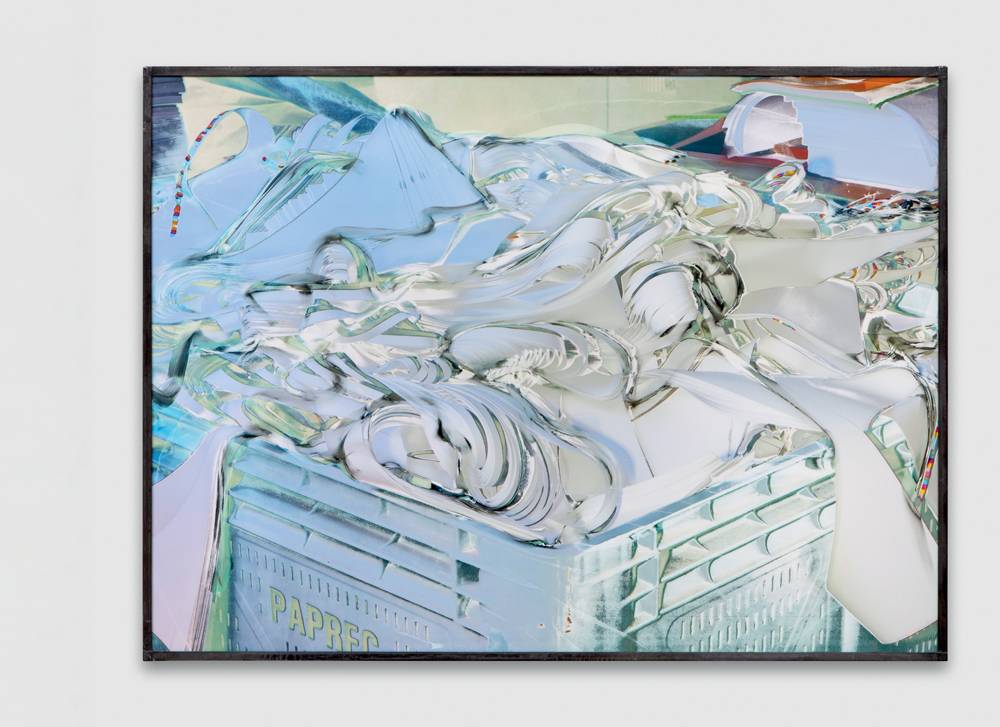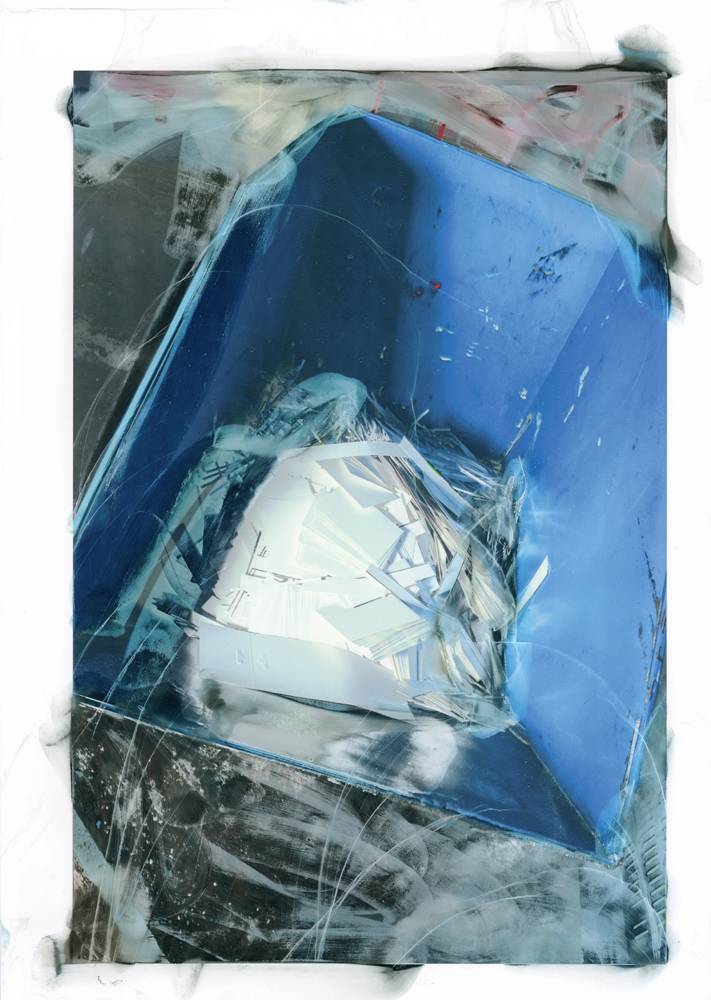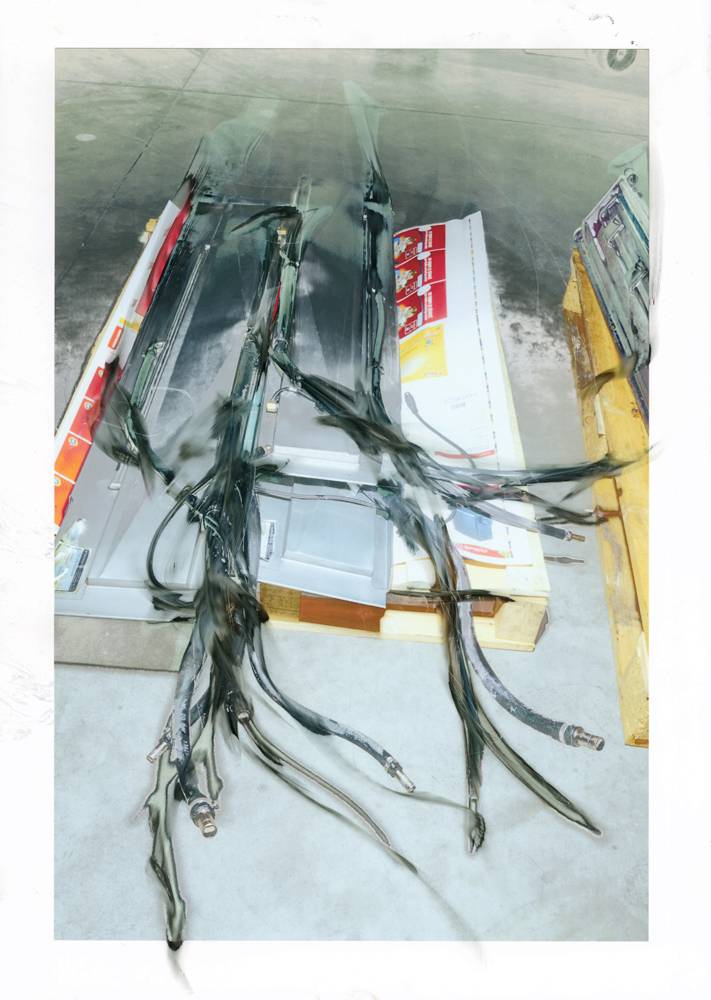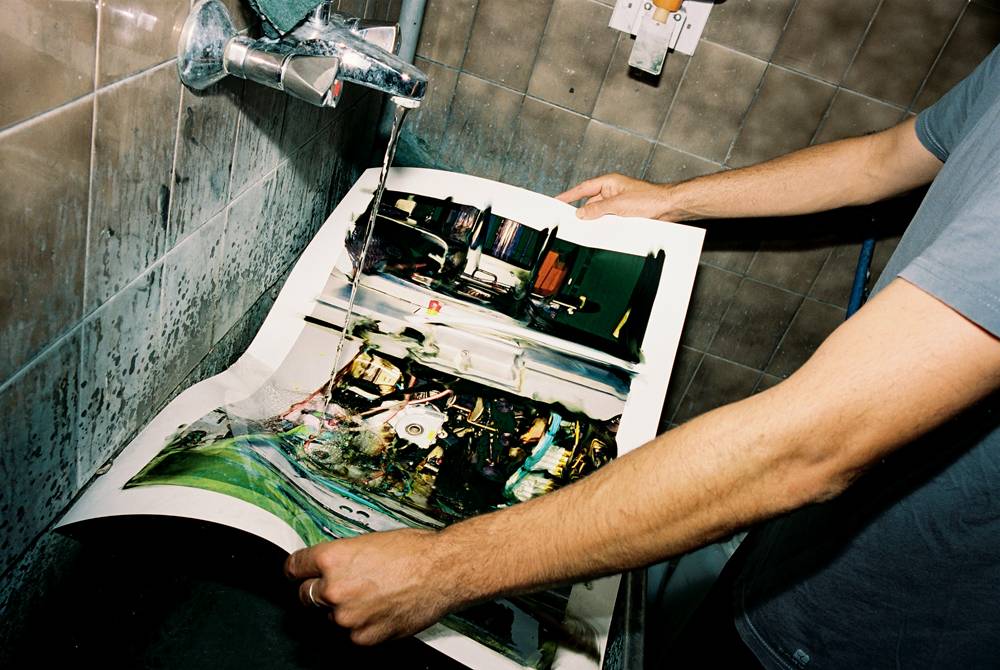Young French photographer, Jean-Vincent Simonet makes his family print shop the subject of his latest Heirloom series , like a mise en abyme to better dissect matter and question the aura of images. This project will be presented in the Curiosa sector of the Paris Photo fair, from November 10 to 13.
Faced with the influx, the abundance but also the disembodiment of the image in the 20th century, Jean-Vincent Simonet is one of those who try to restore its aura and its plasticity.With their hallucinatory colors, their liquid forms and their moving outlines, the photographs of this young Frenchman take on a resolutely pictorial appearance: urban architecture dissolves in phantasmagorical skies illuminated by city lights, flower petals frozen by the apparatus become liquid stains dripping on top of each other, the naked bodies come closer to the cyborg or the doll than to the human with their supernatural reflections and tones, while the industrial machines are almost reduced to abstraction through their blurred and contrasting components, So many subjects transposed into a world governed by unprecedented visual tensions, where the 31-year-old artist defies the clichés of a desacralized medium.

If the graphic interest of Jean-Vincent Simonet develops from a young age, the native of Isérois prefers very early the camera to the pencil or the brush. By its immediacy, photography appears to him as the ideal support for his creativity, all the more so when he discovers the infinite possibilities of digital transformation offered by Photoshop. During his studies in Switzerland at the prestigious ÉCAL, however, the man quickly felt limited by his medium, until the day when he inserted a photo paper upside down in a printer. Whether film or digital, the shot then becomes for him only the first step in a long process of image processing that he qualifies as “destructive”, diverting the original shot in its modes of physical appearance.

“ When my photos go to print, they wake up.”
With the professional machines of his father's printing press in Bourgoin-Jallieu, he experimented by printing his inkjet photographs on plastic sheets and not on paper, which hindered their drying. On their surface, the young man reworks the still fresh droplets with his finger, controls the flow of ink, then immerses the prints in baths of water and oil before drying them, developing a whole palette tools which, in his words, “ pirate and contaminate the image through the subtraction of matter ”. The artist adds: “ When my photos go to print, they wake up. It is this moment of erosion that I am looking for .”


Fascinated by action video games such as Elden Ring and the Japanese animated films Akira and Ghost in the Shell , Jean-Vincent Simonet seeks through his processes to transcribe the fantastic dimension of science fiction in the image. An abundance of bright and poisonous colors, visual saturation, enigmatic faces and nocturnal lights run through In Bloom, a series of almost dreamlike images, immersing the viewer in a Japan at the gates of reality.
His next project, Waterworks, further questions the reproducibility of the image: the artist will print several copies of the same selection of 66 shots – portraits, nudes, flowers – constantly modifying the treatment of the prints.

In 2021, while spending his entire summer in his father's printing press to advance his projects, Jean-Vincent Simonet decided to make this setting the subject of a new series, Heirloom. Imbued with the young man's family history and childhood memories, the establishment reveals all its poetic dimension under his lens: close-ups of the interiors of machines or tools, views of rolls of paper invading the space, or of labels piled up on desks.
“Machines that are stopped are like sleeping animals”, confides the photographer who took the majority of these shots at night, when the employees of the printing works are absent. Deviating from the pop aesthetic in which he had begun to inscribe his work, this project brings a certain softness to the coldness usually correlated to the industrial universe by the alteration of colors and the ever more pictorial fusion of contours, which have become his signature.

